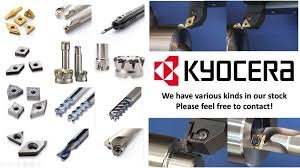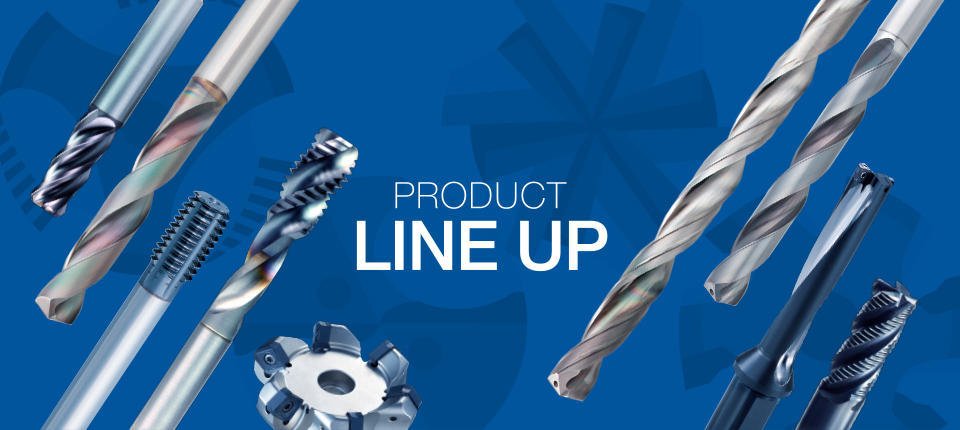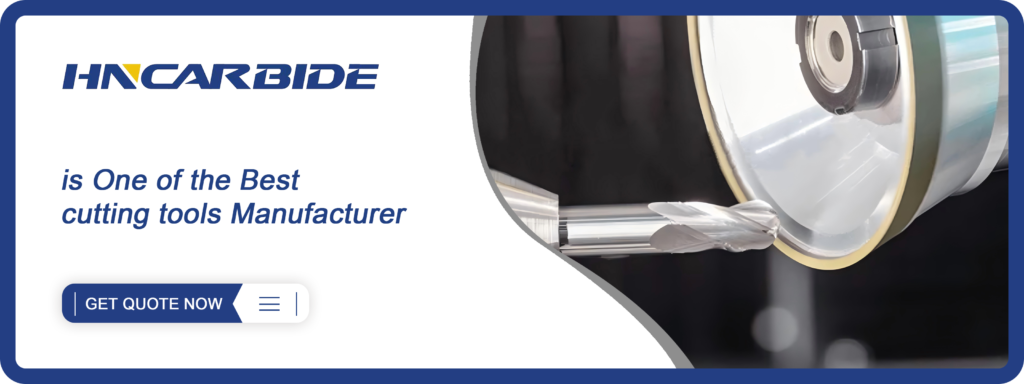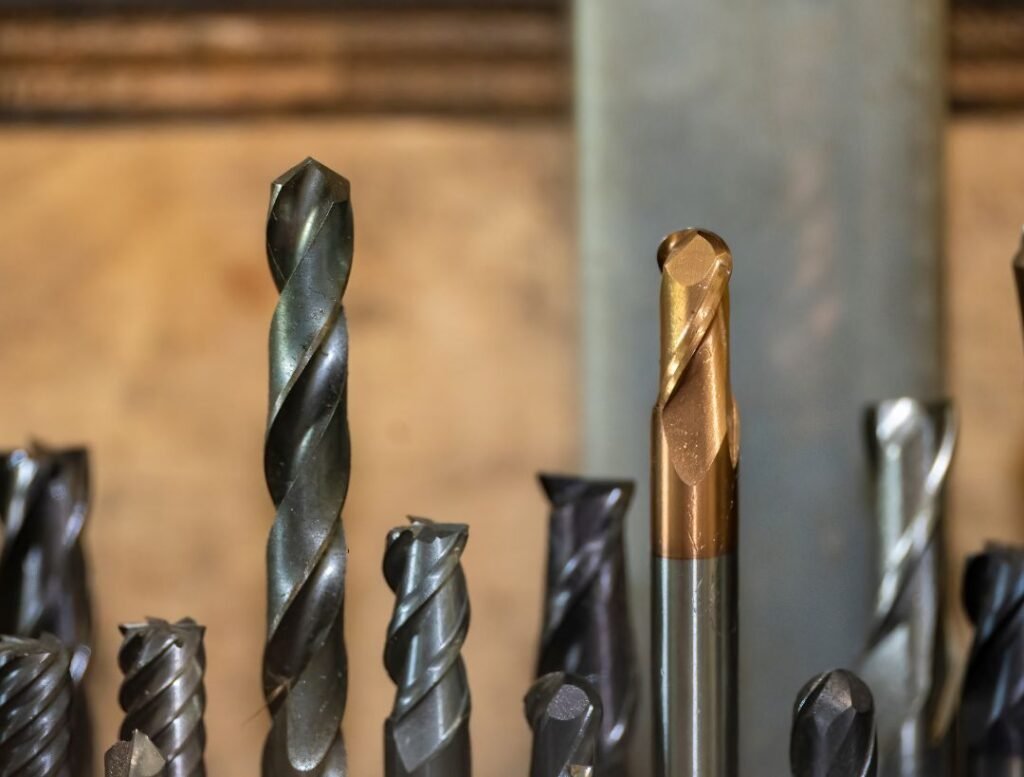Kyocera vs Mitsubishi DIAEDGE: Japanese Carbide Tools in European Markets Compared
Table of Contents

Accuracy, strength, and repeatability are the most important factors in modern machining in every industry, from die/mold to aerospace and automotive manufacturing. Chasing consistent quality plus extended tool life has led many European CNC professionals to Japanese carbide tooling. Kyocera and Mitsubishi DIAEDGE are among the most trusted names.
Both brands provide a full line of cutting tools and carbide inserts engineered to demanding industrial standards. Growing penetration across Europe has brought real competition to the traditional German tooling at the level of DIN-compatible end mills, turning inserts, and radius cutters.
This article offers a side-by-side comparison of these two manufacturers with carbide grades, coatings, application testing, and market support in Europe. It is directed toward helping procurement leads, production engineers, and toolroom supervisors determine which brand to favor so that it comes in handy in their machining strategy.
Brand Positioning
Kyocera and Mitsubishi DIAEDGE have become well-known as the best Japanese brands for tooling, but their focus and the way they position themselves in the European market show that their differences are still quite clear. Kyocera is usually associated with its extensive insert portfolio and the durability of its tools in general-purpose machining.
Mitsubishi DIAEDGE, conversely, is a brand that is very popular in the aviation and car manufacturing sectors, where precision, thermal control, and process reliability are of prime importance.
Although the two brands are intended for CNC cutting tools all over Germany and Europe, the factors that decide between them most often are the depth of the application, the tolerances required, and the cutting conditions.
Feature | Kyocera | Mitsubishi DIAEDGE |
Core Focus | Reliability across general machining | Precision tooling for aerospace/automotive |
Known Strength | Wide insert range, tough substrate | Advanced coating tech, high-speed stability |
European Market Penetration | Strong in general CNC shops | Favoured in high-spec manufacturing |
Product Breadth | Inserts, cutters, turning, grooving | End mills, inserts, complex tool holders |
Brand Position in Germany | Popular among job shops and midsize firms | Used by OEMs and Tier 1 suppliers |
Kyocera
Kyocera may not be the most notable name in the tooling world, but it is definitely the one that consistently delivers great results. The Kyocera Precision Tools brand is built on the principle of long-term reliability and is well-known for dependable performance. Their insert lineup is broad and deep, making them a trusted choice for general-purpose turning, milling, and drilling.
Kyocera CNC tools are reliable even during harsh conditions, keeps your tolerances clean, and reduces the scrap pile. For shops focused on uptime, cost control, and tool life, Kyocera’s toughness and ease of integration hit the right balance.
- Headquartered in Kyoto with European operations focused in Esslingen, Germany
- Strong foothold in general CNC machining, job shops, and midsize production lines
- Inserts and end mills optimised for wear resistance, especially in steel and cast iron
- Trusted name in medical, energy, and general engineering sectors
Mitsubishi DIAEDGE: Where Precision Meets Ambition
The DIAEDGE range of Mitsubishi Materials has an image of a friend who is always there and ready to take up any challenge that others would rather avoid. Do you need very precise aerospace parts? No problem. Do you want hard alloys in automotive hubs? That’s easy for Mitsubishi. DIAEDGE products are designed to extend the boundaries without overburdening your machines.
Employing cutting tools of advanced coatings such as AlTiN and CVD-based high-performance inserts and end mills, DIAEDGE tools are the perfect match for applications characterized by high demands and tighter tolerances.
Industries rely on Mitsubishi DIAEDGE for their aerospace, die/mould, and automotive Tier 1 production, picking up heavy production even during extended runs or dealing with hardened materials.
- Backed by Mitsubishi’s decades of metallurgy and coating science
- European support and training centres deliver fast tech assistance
- DIAEDGE tools are especially popular in high-spec industries across Germany and France
- Strong performance in applications requiring high feed rates and heat stability

Carbide Grades and Coatings
Carbide substrate and coating technology are the main factors that determine the tools’ performance under high pressure and at high-speed operations. Kyocera and Mitsubishi DIAEDGE are two brands that have a big stake in carbide engineering.
Their grade and coating options, grain size, toughness, and film type decide tool stability, wear resistance, and compatibility with difficult applications, from steel milling to aerospace finishing.
Grain Size and Toughness Comparison
Kyocera’s MEGACOAT cermet inserts are made up of super micro-grain substrates (0.6–2 µm range) that have been designed with high nitrogen content for fracture toughness equivalent to that of P15-grade carbides. These substrates are the best in interrupted cuts and work-hardened materials, owing to the finely balanced microstructure.
Mitsubishi DIAEDGE has a great reputation for precision. They offer series like MD and XA, which contain fine-grain carbide that is matched with substrate treatments that improve the resistance to chipping. Although the sizes of grains are not always revealed, Mitsubishi goes on to say that they have high transverse rupture strength that supports aggressive machining strategies.
Coating Performance in Steel
Both brands use industry-standard coating families but apply them differently:
Kyocera deploys advanced PVD coatings like PR1535 MEGACOAT NANO, featuring oxide-resistant, nano-layered AlTiN films for stable tool life in heat-resistant steel and stainless steel at oxidation temperatures beyond 1,100 °C.
Mitsubishi DIAEDGE incorporates CVD AlCrN and TiAlN on core series, optimised for high-temperature steel machining. An additional substrate layer often enhances coating adhesion and tool life, especially under heavy interrupted cuts and high feed operations.
Signature Series Overview
Kyocera’s PR17-series end mills (e.g., PR1725) include MEGACOAT NANO PLUS technology and offer balanced toughness and wear resistance. It is perfect for high-speed machining in steel and stainless alloys.
Mitsubishi DIAEDGE’s MD355/MD415 series, built with AlCrN coatings and ultra-fine substrates, delivers long tool life under high feed and high-speed conditions, particularly in aerospace and hardened steel environments. These lines are common in German OEM shops due to their ability to hold sharp corner radii and precise feature finishes.
Application Testing Results
Tool life and cutting performance aren’t theoretical in European shops. They’re measured in hours saved and parts delivered on time. In comparative testing environments, Kyocera and Mitsubishi DIAEDGE take different routes to reach the same destination: reliable, high-accuracy cutting across complex alloys and high-volume jobs.
Tool Life Under Dry vs Wet Conditions
Kyocera tools, especially their MEGACOAT NANO end mills and inserts, have shown excellent wear resistance in dry machining of carbon steel and cast iron. In Kyocera’s own trials, inserts running dry at 200 m/min on grey cast iron lasted up to 40% longer than conventional TiAlN-coated tools. This makes them a favourite in shops, minimising coolant use to save costs or simplify setups.
Mitsubishi DIAEDGE, meanwhile, leans into wet and high-pressure coolant applications. Their CVD-coated inserts, particularly in the MC6025 series, excel at maintaining edge stability and avoiding crater wear when coolant is applied directly into deep pockets or bores, a major advantage in aerospace components with tight tolerance zones.
Feed Rate and Depth of Cut Benchmarks
In high-speed die/mold operations:
- Kyocera PR1725 cutters delivered stable performance at feed rates of 0.1–0.25 mm/tooth, with depths up to 2×D in alloy steel, even during pocketing and ramping.
- Mitsubishi DIAEDGE MD255 inserts, tested at 0.15 mm/tooth and ap = 1.5 mm, retained sharp edge profiles after over 50 parts in 42CrMo4 tempered steel.
These performance benchmarks indicate that the DIAEDGE implements are more compatible with controlled aggression and higher feed rates in wet conditions, whereas Kyocera tools perform better with moderate feeds and minimum cooling.
Real-World Aerospace and Die/Mold Testing
German aerospace suppliers utilizing Kyocera’s PR1535 series have noticed improved part stability and finish quality while dry roughing Inconel 718. The tool’s nano-layered coating cuts the friction and keeps it from oxidation, which is very important at high cutting temperatures of about 900 °C.
Concerning the mold side, inserting the MP9005 series of Mitsubishi can notably reduce downtime during the high-volume steel cavity milling. The reasons are wear zones that are extended and chip breaker geometry that is built in. This series is now a standard in many European die/mold shops using HSK 63A spindles.

Market Support and Distribution
The impact of a cutting tool does not stop at the spindle. When the cutter wears or the tolerance begins to drift, the next advantage is provided by the service infrastructure behind the brand. Both Kyocera Precision Tools and Mitsubishi DIAEDGE have invested in European operations, though their focus and depth differ.
Kyocera still has a growing European footprint with its production site and logistics hub in Esslingen am Neckar, Germany. DIAEDGE, Mitsubishi’s global tooling brand, supports European customers via MMC Hartmetall GmbH, headquartered in Meerbusch, along with technical centers in multiple countries.
Feature | Kyocera Precision Tools | Mitsubishi DIAEDGE (MMC Hartmetall) |
European HQ | Esslingen, Germany | Meerbusch, Germany |
Local Manufacturing | Yes – Inserts and select end mills | Yes – Inserts and milling cutters |
Logistics Coverage | Central Europe, extended via Kyocera EU network | Full EU coverage via MMC Europe network |
Technical Centres | Germany (Esslingen), UK | Germany (Meerbusch), Czech Republic, UK |
Regrinding Service | Available via Kyocera Germany + partners | MMC regrinding centres in DE, CZ, and IT |
On-site Support | Application engineers available for visits | DIAEDGE field specialists across DACH region |
Tool Management Solutions | Limited integration offerings | DIAEDGE Tool Management System (DMS) available |
Lead Times | Moderate – stocked SKUs common | Fast – large EU inventory and VMI programs |
Pros and Cons
Kyocera and DIAEDGE, two of the best Japanese tooling brands, are similar in quality but different in no way that affects performance. One focuses on longevity and performance consistency, while the other is all about accuracy and the optimization of materials.
Kyocera
Pros | Cons |
High toughness for rough machining | Not ideal for ultra-fine surface finish |
Versatile across many materials | Limited geometry options in niche cases |
Good feed rate flexibility |
|
Strong European support |
|
The brand that stands out in the niche of precision tools is, without a doubt, Kyocera Precision Tools. It is the best option for those who want to have a trustworthy tool. Its tools are extremely tough in grain structure, hence they are the best for roughing cycles and high-load operations. You can see them running day in day out with no edge failures, which is particularly true for jobs with interrupted cuts or castings.
But this toughness has a tradeoff. Kyocera doesn’t always offer the same surface finish finesse or ultra-high-speed capabilities that DIAEDGE is known for, especially in aerospace applications.
Mitsubishi DIAEDGE
Pros | Cons |
Excellent finish precision | Shorter life under heavy roughing loads |
Strong in aerospace and automotive sectors | Premium pricing |
Accurate in finish passes |
|
Advanced tech support |
|
DIAEDGE tools, produced by MMC Hartmetall in Europe, shine in highly controlled, high-speed applications. The brand’s inserts and end mills are often tailored for specific alloys, giving superior results in tight-tolerance environments, think aerospace ribs or thin-wall automotive parts.
While DIAEDGE excels in precision and surface integrity, its tools sometimes have a steeper learning curve. They may demand tighter control over feeds, speeds, and setup rigidity to unlock their full potential.
Conclusion
Choosing between Kyocera and Mitsubishi DIAEDGE comes down to your material, industry focus, and production needs. Shops that machine general steels, cast aluminium, or seek consistent performance across multiple shifts often prefer Kyocera Precision Tools. Their toughness-focused grades and wide insert catalogue suit medium-to-large volume production where reliability and versatility matter.
On the other side, Mitsubishi DIAEDGE is a perfect match for high-precision industries such as aerospace and automotive mould/die machining. The carbide grades and razor-sharp shapes of their products are designed to achieve accurate finishing and small tolerances.
Need a second opinion before your next tooling order?
HN Carbide supports CNC operations with tested, high-performance carbide solutions that meet or exceed DIN standards. Reach out to us to compare specifications, run sample tests, or discuss custom geometries. We’ll help you cut with confidence.





